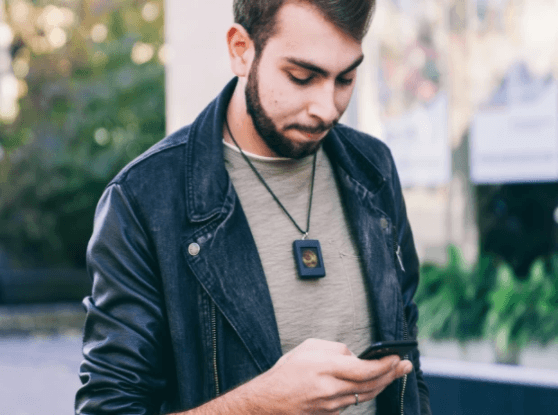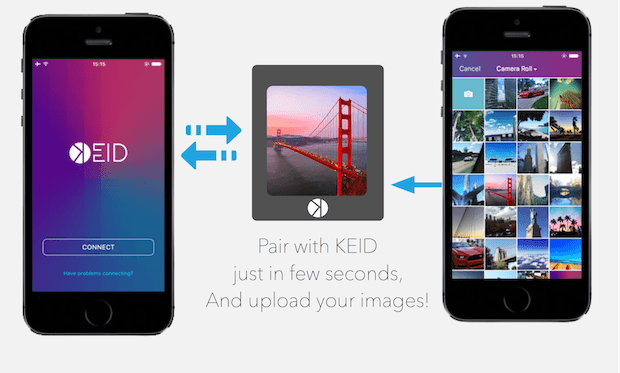Silly And Brilliant; You Should’ve Thought Of The Keid Connected Pendant
NewsTech September 5, 2023 Damon Mitchell

The Keid Connected Pendant launched recently on Indiegogo. It’s not very high-tech, but it’s brilliant. It’s gonna out-produce every other wearable on the market.

(source: klew.tk)
When wearables historians look back on this time, they characterize it as the middle ages. We have yet to see the renaissance.
The thing about middle ages is, we’re not without invention. We just lack that explosion of applied tech that we had in previous years. For now, folks will invest in wearables by companies like Apple, Fitbit, and Garmin. These platforms won’t change much in 2017.
Meanwhile, there is an endless stream of new tech in development, waiting for a place to live. That, and we have wearables like the Keid pendant.
Before you roll your eyes, consider that many did the same with Snapchat. They’ve only grown since that time, gulping down market share. Heck, they even have their own wearable now.
Essential reading: The New Eye-wearable from Snapchat Takes Pictures
Like Snapchat, wearables like Keid will grab the attention of your teenager faster than your waterproof Fitbit band because they do something fitness wearables can’t. Despite the lack of elegant design elements, wearables like Keid appeal to a user’s identity (and self-expression thereof).
For Keid, all that is contingent on how well they do with their Indiegogo campaign, but (no surprise to this author) so far so good.
Design Elements

(source: indiegogo.com)
For what it does, Keid is kinda… klunky. In a nutshell, it’s a picture frame on a chain you wear around your neck.
The frame comes in four different styles, black, aluminum, wood or flowers. Inside that frame is a little screen. It’s like a small version (4×5”) of that smartphone in your pocket, except Keid doesn’t take calls. It doesn’t do anything other than display images or GIFs.
Keid is equipped with a touch screen so users don’t have to access the smartphone app to scan through images. That said, there’s no camera so you have to load the images from your phone.
It’s iOS and Android compatible, lasts ten hours on one charge, and stores up to eight gigs of data. Image resolution is 240 x 240, which isn’t awesome, but for the size of the screen it works.
As a bonus, Kid is waterproof, so if you get stuck in the rain, you’ll still display images from your pendant.
Self Expression

(source: indiegogo.com)
This is another example of a wearable that understands a fundamental aspect of business. I’ve referenced the Starbuck’s model before.
The people behind Starbuck’s don’t kid themselves about their coffee. They are not in the coffee business. They are in the people business, but what does that mean?
It means that the people who come into a Starbucks get a certain, consistent feeling about themselves when they buy coffee. It validates every perception they want to have about themselves.
This is what our most important purchases do. They highlight the way we want to see ourselves. We engage with those purchases on a personal, emotional level.
There is little more personal than the pictures of our lives, nothing we want to show random strangers. With Keid it’s all right there on the user’s chest like a superhero emblem. It says, hey world, this who I am; this is my awesome life.
Indiegogo

(source: indiegogo.com)
With a month left on their crowdfunding goals, the crew behind Keid is over halfway there. They only want to raise $20,000, which I predict they will do before the end of this year.
Early birds can get in on the ground floor for fewer than fifty bucks, earning not one device, but two!
They ship worldwide with no additional shipping costs. They expect the first Keid pendants to ship in June of 2017.

(source: creativegentleman.com)
If you’re in our usual target demographic, you’ll not buy the Keid for yourself, but for your kid. The cutoff age by my estimate is age 25. After that, you’re gonna feel a little silly wearing this.
I could be wrong. When Pharrell Williams wears anything, I presume the trend will end there. I never would’ve expected the hip-hop fashion of oversized pins would take off, but they did.
If this is the case, then Keid will find its way onto the necks of people over age 25. Also, that will make me even more right about this wearable doing better than your Fitbit.
Get involved with the Keid Indiegogo if you’re into pins or have a kid.